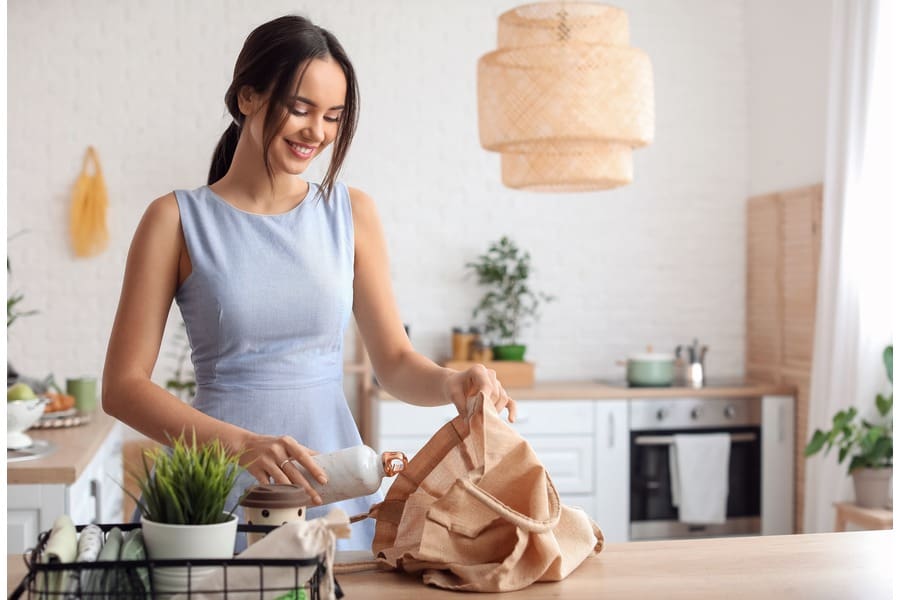What’s one way to embrace a greener and more sustainable lifestyle? By switching to eco-friendly home products! This guide presents you with some practical steps to help you get started.
The Importance of Eco-Friendly Living
Let us first grasp the importance of eco-friendly living. Sustainable choices, from diminishing pollution to conserving natural resources, contribute to reducing our environmental footprint. Switching to eco-friendly products also introduces a healthier indoor environment, as they eliminate harmful chemicals. Thus, eco-friendly living nurtures both your personal well-being and the planet’s health.
Simple Swaps for a Greener Home
Cleaning Supplies
Choose plant-based cleaners crafted without harmful ingredients. You can also mix your own cleaning solutions with everyday household items such as vinegar and baking soda, enhancing cost-effectiveness and minimizing packaging waste.
 Our Pick: Blueland Clean Essentials Kit ($46, shop here)
Our Pick: Blueland Clean Essentials Kit ($46, shop here)
Kitchen Essentials
Invest in reusable storage containers to reduce single-use plastic and promote kitchen organization. You can also swap out plastic wraps for environmentally conscious beeswax wraps. These washable, reusable alternatives drastically reduce plastic waste.
 Our Pick: Caraway 14-Piece Food Storage Set ($305, shop here)
Our Pick: Caraway 14-Piece Food Storage Set ($305, shop here)
Home Decor
Upcycling old furniture to breathe new life into it is a creative process that not only adds a touch of uniqueness to your home but also minimizes waste – a win-win situation. Plants can also enhance the aesthetics and health of your space by improving the air quality.
Energy-Efficient Appliances
Make the switch to energy-efficient LED bulbs. You can also opt for smart thermostats to efficiently regulate your home’s temperature; these advanced devices learn your preferences and actively conserve energy.
Sustainable Shopping Practices
- Look for eco-friendly certifications such as Fair Trade or Energy Star.
- Buy in bulk to minimize packaging.
- Bring reusable bags.
- Refuse single-use plastics.
Eco-Friendly Habits for Daily Living
Reduce, Reuse, Recycle
Prior to any purchase, question its necessity. Then, infuse your recycling efforts with creativity. For example, transform old jars or bottles into chic storage containers or imaginative DIY crafts.
Water Conservation
Repair leaks as soon as possible (a dripping faucet can waste substantial amounts of water) to underscore your commitment to sustainability and responsible usage. You can also consider collecting rainwater for plant irrigation, mitigating your dependency on treated water.
Final Thoughts
Everyone can do their part to integrate sustainability into their daily routine. Bear in mind that the pursuit is not perfection but progress. Each small change contributes to a more sustainable future.






